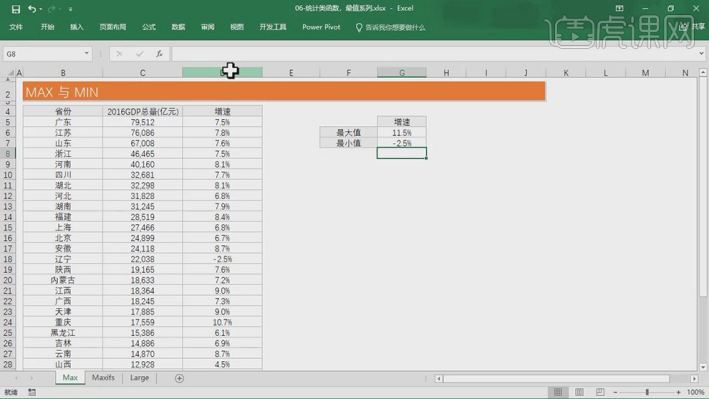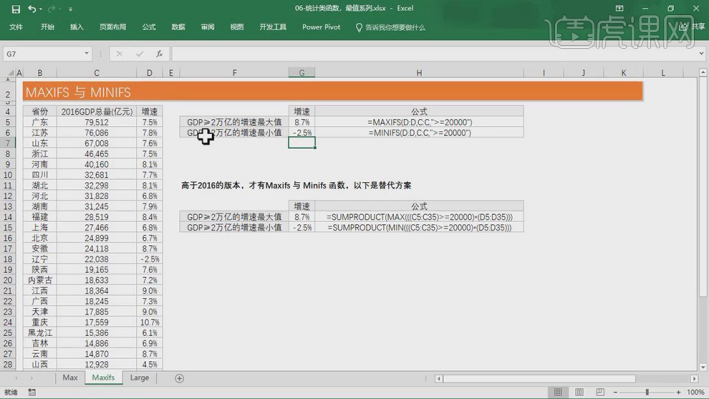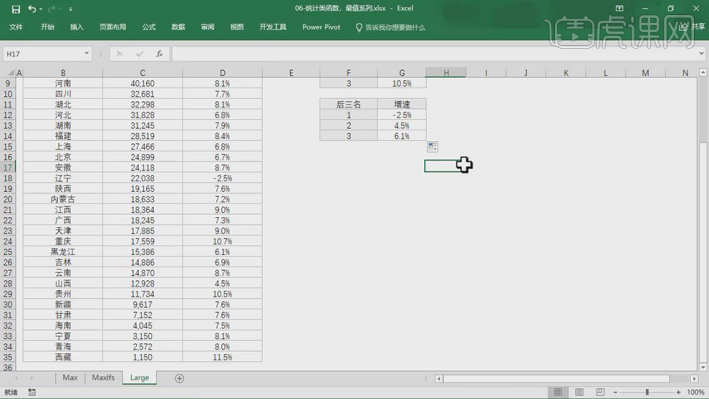
php editor Youzi will introduce how to use the max() function in PHP. The max() function is used to return the maximum value in a set of values. In PHP, you can call the max() function through simple syntax to quickly and easily obtain the maximum value in a given array. Through the guidance of this article, readers will understand the usage and precautions of the max() function, so as to better utilize this function to process numerical data.
First, after opening the table that needs to be processed using the max function, we need to ensure that the cursor is located in the cell where we want to output the result. Taking the maximum value of GDP growth as an example, in Excel, operate as shown in the figure below:

2. [MIN function] Calculate the maximum value, [ Input] = MIN, [Select] area, as shown in the figure.

3. Press [Condition] and use [MAXIFS and MINIFS] to find the maximum and minimum values, as shown in the figure.

4. Use [SUMPRODUCT(MAX) and SUMPRODUCT(MIN)] instead to find the minimum and maximum values. as the picture shows.

5. [Use] LARGE to calculate the top three, [Input] = LARGE, [Select] the data range, as shown in the figure.

6. [Use] SMALL to calculate the last three digits, [Input] = SMALL, [Select] the data range, as shown in the figure.

The editor’s explanation ends here. I hope everyone can learn to apply the max function of excel, which allows you to find the largest data among thousands of data. , save time and effort! What are you waiting for? Hurry up and open the software and practice!
The above is the detailed content of How to use the max function. For more information, please follow other related articles on the PHP Chinese website!




